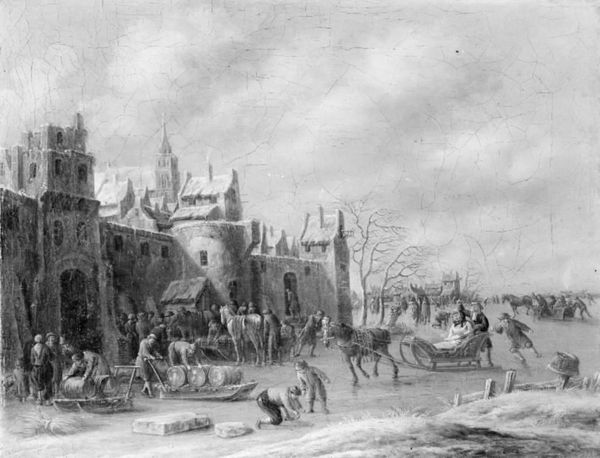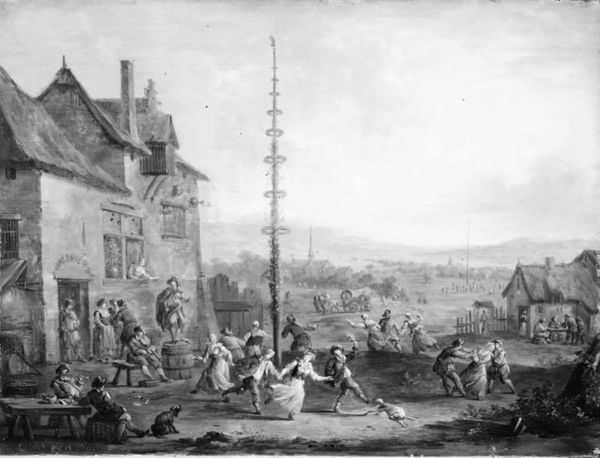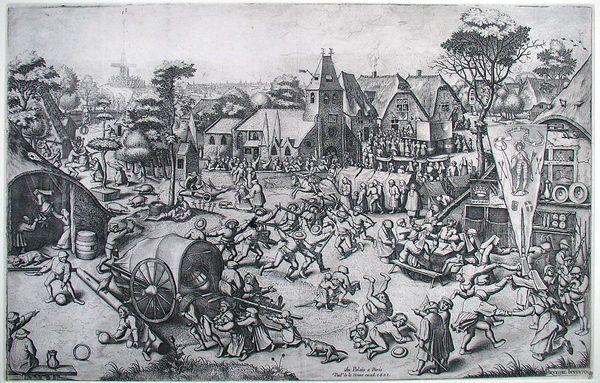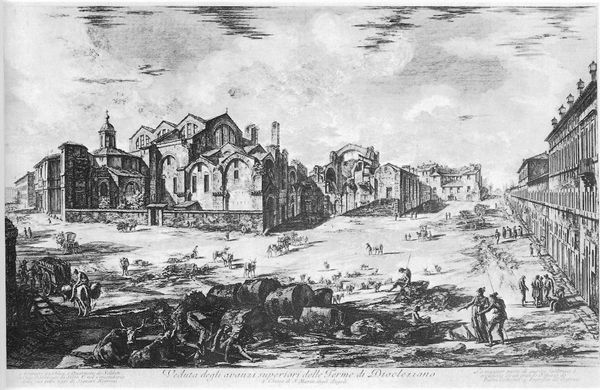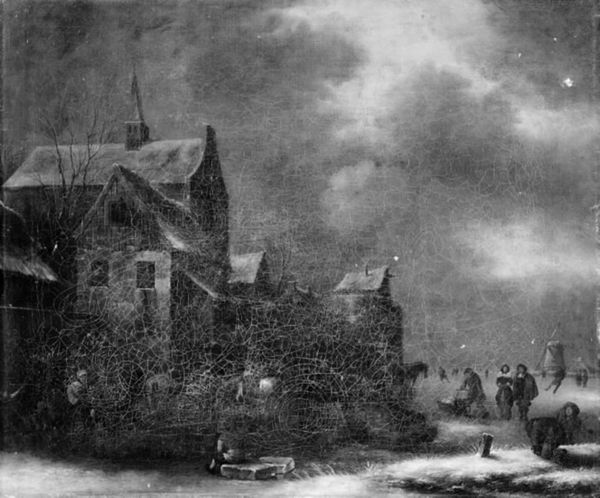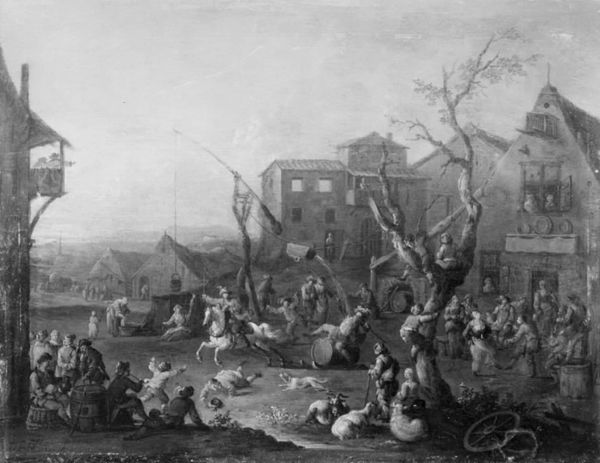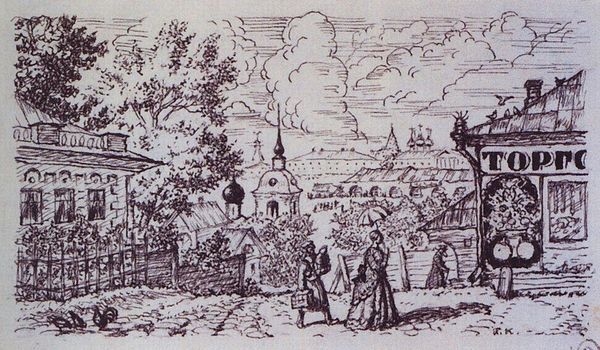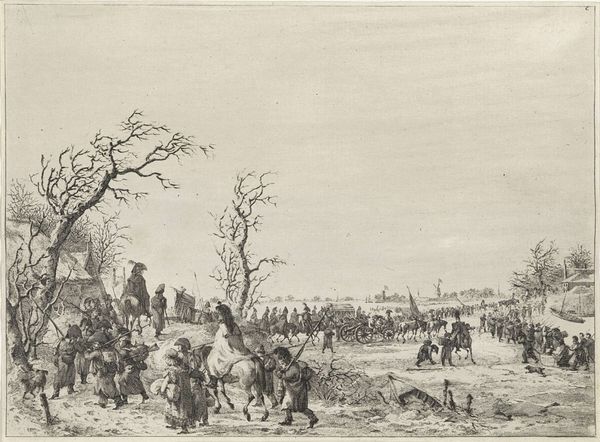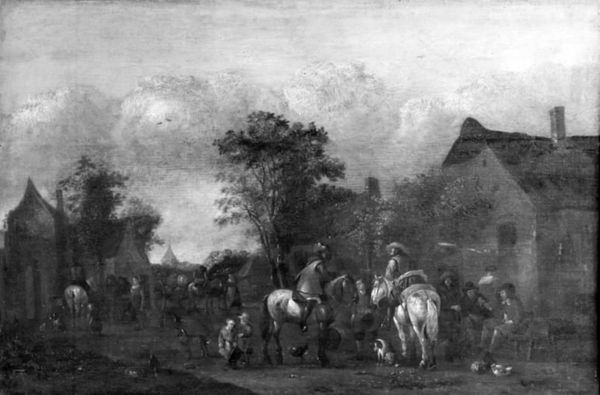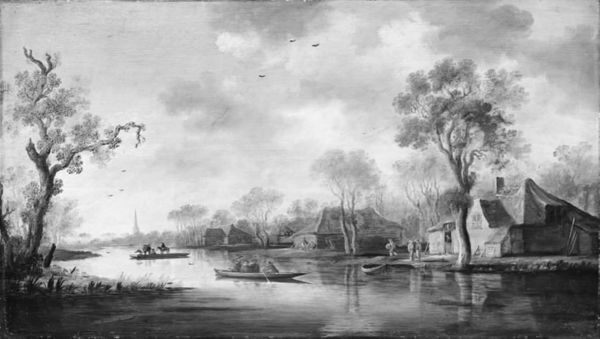
drawing, pencil, wood
#
drawing
#
medieval
#
pencil sketch
#
landscape
#
pencil
#
wood
#
cityscape
Dimensions: 44 cm (height) x 58 cm (width) (Netto)
Editor: Right, so we’re looking at "Winter Scenery," dating somewhere between 1601 and 1650, and attributed to someone known only as Monogrammist IW. It’s a pencil drawing on wood, held at the Statens Museum for Kunst. The scene is captivating in its depiction of daily life amid what appears to be harsh winter conditions. What strikes me is how it manages to feel both bleak and full of activity at the same time. What do you see in this piece, considered through its historical lens? Curator: It’s a fascinating piece precisely because it blends everyday life with a specific historical moment. Notice how the architecture positions the work socially; there's no overt display of wealth, the homes seem modest. These details offer clues about the burgeoning middle class and its integration with peasant society in Northern Europe, and how their leisure was shaped by seasonal constraints. How does the representation of social classes inform your interpretation? Editor: Well, you pointed out the modest dwellings which contrasts with the few figures that appear to be of high status as one figure rides a horse. Also, many figures seems to be engaging in winter activities such as ice skating and strolling down the road and one appears to be carrying firewood which shows the responsibilities between people during the period. So this is what makes me believe the artwork represents the classes. Curator: Exactly. Also, think about the political context. The period 1601-1650 saw significant religious and political upheavals in Europe. Is there any indication in the imagery that hints at conflict or societal anxieties? Could the barren landscape, in some way, represent the impact of these events on community life, as a collective reflection of turmoil? Editor: It's an interesting point to think of the 'barren landscape as turmoil', which is true because, there are no indications or highlights within the image, the greyed pencil doesn't do justice as the buildings look dark. What I've learned is that landscapes can depict social standing during certain periods. Thanks! Curator: Indeed, and it’s through recognizing the multiple layers of history—social, political, economic—within even a seemingly simple scene, that art provides critical cultural insight.
Comments
No comments
Be the first to comment and join the conversation on the ultimate creative platform.
